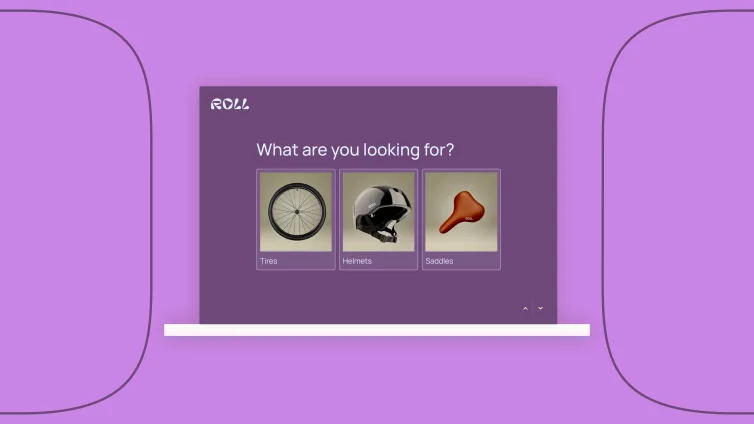Wake up to a sunrise in Thailand. Explore new and ancient Europe. Pull papaya right off a tree in Central America. Six months here, three months there. All while working 5.5 hours a day.
Behold the lifestyle of Tomas Laurinavicius.
Tomas who? Lau, for short—a serial entrepreneur who’s built and sold two businesses. Now he travels the world and lives his dream—writing about lifestyle design and entrepreneurship. And he’s only 25.
I caught up with Tomas somewhere between Hong Kong and Aruba to talk about his journey.
Design a dream job that won’t need a vacation
EJ: You’ve been traveling the globe for a couple of years, and you make it look so easy. How did this start?
TOMAS: I was working at a design agency in London, and I was completely bored of the weather and mindless hustle. I’d also started a new design magazine, Desepreneur, for other designers like myself. Basically to teach myself entrepreneurship and figure out: How can I make money while I sleep?
I saw people traveling the world, and I thought why not try it. I wasn’t aware of Tim Ferriss’ 4-hour workweek at the time, but I was following some people like Pieter Levels who were doing this.
So I convinced the London agency to let me work just a couple days a week with them, which gave me time to start building my business. Once I had some savings built up, a friend and I started our first world tour around Europe, North America, and Southeast Asia. I was hooked.
EJ: Despreneur was a place where people could learn design, technology, and business skills. You grew this platform into millions of annual readers. How did you do this?
TOMAS: Despreneur was actually my fourth design blog so I had some previous experience. The first one I started while in high school in Lithuania, and it was all in Lithuanian.
It doesn’t take much math to realize that even if I reach everyone in Lithuania who’s interested in design, it’s still not a very big market. So I switched to my broken English, and within a month or two my traffic tripled. And then I sold it because I was young and wanted some pocket money.
The next year I started webdesignfan.com to focus on Photoshop tutorials, design resources, and trending techniques. I was able to hit like 50,000 unique visitors every single month, which opened up some business partnership opportunities.
I also founded another startup called Refe where we sell mobile stock photos.
When I started Despreneur, I wanted to focus on creating recurring revenue—bringing people back instead of searching for new clients every single month.
I taught three main subjects with the Despreneur Academy: design, entrepreneurship, and technology. Master these subjects, and you can be a capable design entrepreneur. You’ll be able to pitch a business plan, build a marketing strategy, design and even code the products.
Despreneur Academy first came to life in a Udemy course, so I could test the idea without building an external platform. The course did really well on launch day, and then the next day sales just dropped. So I had to figure out how to grow my audience.
To build an audience, focus on relationships
EJ: What were the big strategies or tactics that you used to grow Despreneur so quickly?
TOMAS: Several years ago it was easy to get Twitter followers. So just by publishing good, unique content, I went from 5,000 to 10,000 to 20,000 followers in no time.
This social media marketing strategy worked, but the real secret is outreach.
“To build an audience, focus on relationships first. And if you’re producing great content, these relationships will open up their audiences to you.”
I contacted other design bloggers and said, “Okay guys, we’re in the same business and we’re all publishing related content. Instead of competing we can help each other out.”
So every time I published something, I sent them the links to share and upvote on niche websites like DesignFloat, DesignBump, StumbleUpon, Reddit, subreddits, Product Hunt, or Hacker News. When they published something, I did the same for them.
This cross-promotion was a huge strategy for getting big growth and stable traffic every single month. So building an email list is key.
“Email lists have money printing superpowers. Once you have dedicated people in your email list, you can print money on demand.”
Despreneur also had two weekly series. The first was Apps to Watch where I listed 10 apps that I thought were really valuable—nice design, serve a key purpose, ground-breaking functionality.
The other series was Startup of the Week. For this one, I interviewed key business people on how they started their business, developed their purpose, found their customers, and so on. This helped me to make friends in a lot of startups, and also let me share with their audiences.
When you have a bigger network then it’s much easier to promote your work.
Is it a hell yes? If not, move on
EJ: Things were going well with Despreneur, and then last year you left. But to decide, you didn’t just weigh up pluses and minuses. What happened?
TOMAS: One morning I woke up and it didn’t feel like Christmas. You know that feeling you have at Christmas when you’re a kid? You wake up and no matter how shitty the weather is, it’s Christmas—you have gifts, lots of food, lots of fun stuff to do. For me, every day felt like that, until it didn’t.
I was on an island in Thailand, and I realized that Despreneur felt like a job. I knew I was done, but to make sure I took out a piece of paper and wrote down some questions. The first came from Derek Sivers.
“Ask yourself: Is it a hell yes? If not, then it’s a no.”
Answering the first question, physically writing it on a piece of paper, I instantly knew that after three years it was over. But I kept answering other questions—Am I growing? Is it worth it financially? Is it meaningful work? Does it feel good? And so on.
I tried to answer everything as honest as possible, but the very first question was already the ultimate answer: it’s not really hell yes, so it’s automatically no.
I was juggling too many projects at once—Despreneur, Refe, coauthoring a mobile design book, consulting for a London-based startup. And my interests had switched toward self-development, habits, psychology, and lifestyle design. So last year I decided to sell Despreneur.
Connecting with influencers
EJ: Self-development is a frequent theme in your Habits and Routines of interview series. How do you connect with these high-profile, high achievers?
TOMAS: My obsession with self-development started when I read Carnegie’s “How to Win Friends and Influence People.” It’s such a simple book, but it so powerfully illustrates the importance of building relationships—by talking or caring about topics that other people care about. It just creates different kind of connections.
“It takes time to dig deeper and find the values, causes, and topics that people care about.”
So I started experimenting with how to connect. For example, I used to go to an event or a conference and my goal was to meet everyone. But it’s impossible to connect with everyone, because sometimes you need 10 minutes just to break through the surface. How are you? What’s your business? No one likes all of this bullshit.
But then you throw out a question like “Do you like Game of Thrones?” or some topic that really interests people, and they completely change. They open up, and then it’s easier to get to what matters.
“What can I do to make your life easier or better? How can I bring you value? Basically, how can I pay it forward?”
So part of connecting is providing value to others. But I also realized that I needed some credibility to interview top people.
One big break came when someone at Forbes reached out to interview me. He sent the questions, and I was literally shaking as I answered them because I was so nervous. And he liked it.
Being published in Forbes was a huge door-opener that allowed me to connect with people at Apple and Uber and Airbnb, some of the biggest players in the tech scene. I also started a podcast interviewing designers at Adobe, The New York Times, and others.
And I learned an important lesson when I followed up to pitch Forbes a longer term collaboration. They read my pitch and left me one comment:
“Focus more on providing value for Forbes instead of focusing how cool or experienced or knowledgeable you are.”
Just a tweak in the pitch fixed that, but it was a lesson that stuck with me.
Speaking of Forbes, here’s how they find the most promising young minds for their Forbes 30 under 30 contest.
Take full ownership of your life
EJ: You’ve said that being an entrepreneur is not for everyone. And you’ve also written that aspiring entrepreneurs should start by understanding where they want to be. Any final thoughts for entrepreneurs?
TOMAS: Take full ownership and responsibility of your life.
So if it’s raining outside and that stops you from doing things—like meeting a client or going to a coffee shop—it’s your fault. Once you get into this mindset, you start to see the power of negative thinking.
Constantly ask yourself, “Okay, what can go wrong?” and then plan for that scenario. When you start thinking about these things, you can start preventing these things.
I also use reverse engineering thinking. I look at the goal and the obstacles, and if these obstacles are worth the end benefits, I make a very specific action plan.
So right now I throw everything in my Todoist inbox—whether it’s get a haircut, create an outline for a new blog post, pitch a new publication, whatever. Then my head is clear, and I start prioritizing everything with dates. I try not to have more than three important tasks a day. If I have a fourth, I put it to the next day.
I have a seven day view. And I have a lot of clarity in what’s coming in my next seven days.
Once I’ve engineered the results, I start to visualize possible bad scenarios. So if one day I have a headache or my energy is low, I focus on lower priority tasks. This is how I engineer every single thing I do. It’s powerful, but first you have to know yourself.
“Self-awareness is key in lifestyle design.”
So imagine you want to start freelancing and traveling the world. Did you ask yourself why? Do you even like being in uncertain and uncomfortable situations? Are you willing to give up security for adventures?
Many people don’t evaluate themselves and their motives. So it’s important to develop your self-awareness skills.
And then once you internalize the concept of owning absolutely everything, and being responsible for your life and the people around you, it makes you less vulnerable and good things start to happen.







